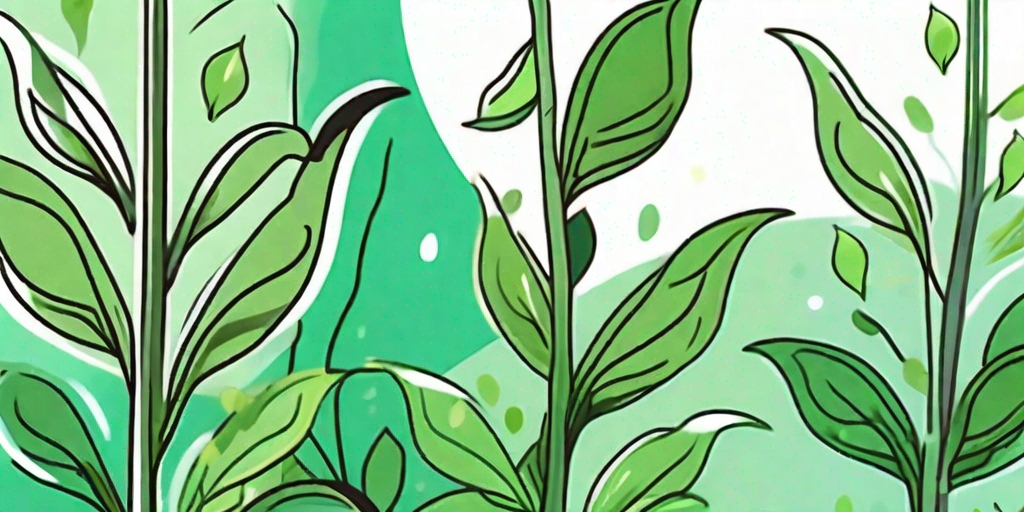
Welcome, green-thumbed friends, to the world of snap peas. These delightful little veggies are a gardener's dream, but they can sometimes be plagued by those pesky white spots. Fear not, for we have the solution! This guide will help you banish those blemishes for good, leaving you with a harvest that's as spotless as a freshly cleaned window.
Understanding the Enemy: What are White Spots?
Before we dive into the nitty-gritty of combat, let's take a moment to understand our adversary. White spots on snap peas are usually caused by a fungal infection, often powdery mildew. This pesky fungus loves to make its home on the leaves, stems, and pods of your precious peas.
But don't despair, dear gardeners! While this fungus might seem like a formidable foe, it's actually quite manageable with the right knowledge and tools. So, let's roll up our sleeves and get to work!
The Signs of an Invasion
Like any good detective, the first step in solving this mystery is to look for clues. White spots on your snap peas will usually start as small, powdery white spots (hence the name). As the infection progresses, these spots can grow and merge, covering large areas of the plant.
But white spots aren't the only sign of trouble. You might also notice a general decline in your plant's health, including yellowing leaves, stunted growth, and a decrease in yield. If you notice any of these symptoms, it's time to spring into action!
Prevention: The Best Cure
As the old saying goes, an ounce of prevention is worth a pound of cure. This is especially true when it comes to gardening. By taking a few simple steps, you can greatly reduce the chances of a white spot outbreak in your garden.
Firstly, make sure your plants have plenty of space. This not only helps them grow strong and healthy, but it also reduces the chances of a fungal infection spreading. Secondly, keep your garden clean. Remove any fallen leaves or debris, as these can harbor fungus spores.
Choosing the Right Varieties
Not all snap peas are created equal. Some varieties are more resistant to fungal infections than others. By choosing these varieties, you can give your garden a fighting chance against white spots.
Some of the most resistant varieties include 'Sugar Ann', 'Cascadia', and 'Super Sugar Snap'. These varieties are not only delicious, but they're also tough as nails when it comes to fighting off fungus.
The Battle Plan: How to Treat White Spots
Despite your best efforts, sometimes white spots can still find their way into your garden. But don't worry, this isn't the end of the world. With a solid battle plan, you can send those white spots packing!
The first step is to remove any infected plants or parts of plants. This can help prevent the infection from spreading. Next, apply a fungicide. There are many different types available, so choose one that's suitable for your garden and follow the instructions carefully.
DIY Solutions
If you're a fan of DIY, there are also some home remedies you can try. One popular method is to mix 1 tablespoon of baking soda with 1 gallon of water, and then spray this solution onto your plants. The baking soda helps to kill the fungus, while the water helps to wash away any spores.
Another option is to use a milk spray. This might sound a bit strange, but milk is actually a great natural fungicide. Simply mix 1 part milk with 9 parts water, and spray onto your plants. Just be sure to use this method sparingly, as too much milk can cause other problems.
FAQs
Can I eat snap peas with white spots?
While it's not harmful to eat snap peas with white spots, they might not taste as good. The white spots are a sign of a fungal infection, which can affect the flavor and texture of the peas.
How can I prevent white spots in the future?
The best way to prevent white spots is to keep your garden clean, give your plants plenty of space, and choose resistant varieties. It's also a good idea to rotate your crops each year, as this can help to break the life cycle of the fungus.
What if the white spots keep coming back?
If you're having trouble with recurring white spots, it might be worth getting a soil test. This can help to identify any underlying issues that might be contributing to the problem.
Conclusion
White spots on snap peas can be a nuisance, but they're not a death sentence for your garden. With a bit of knowledge and some elbow grease, you can keep your snap peas spotless and your garden thriving. So, don your gardening gloves, wield your watering can, and show those white spots who's boss!
Remember, every gardener faces challenges. It's how we respond to those challenges that defines us. So, keep your chin up, your hands dirty, and your garden growing. Happy gardening!











